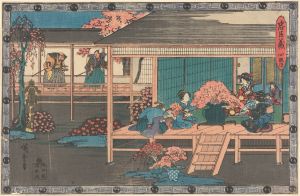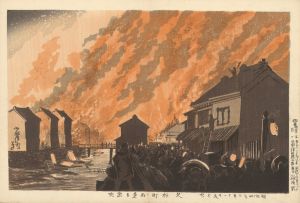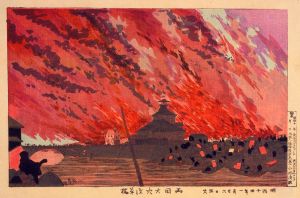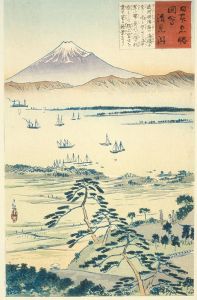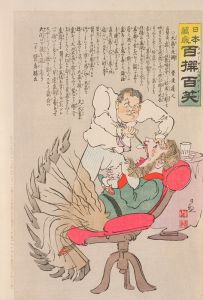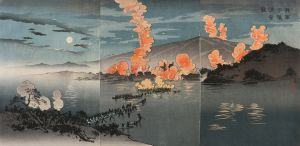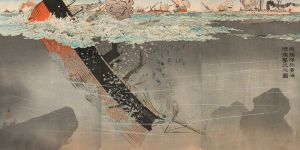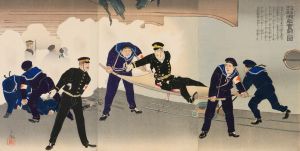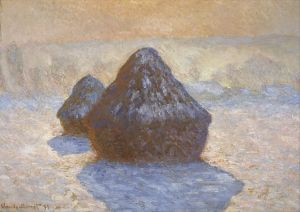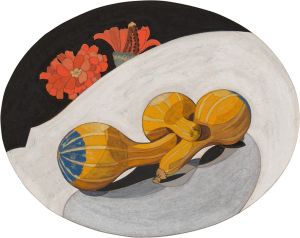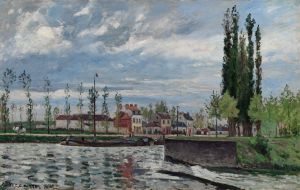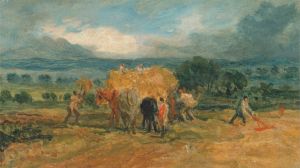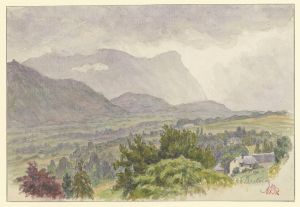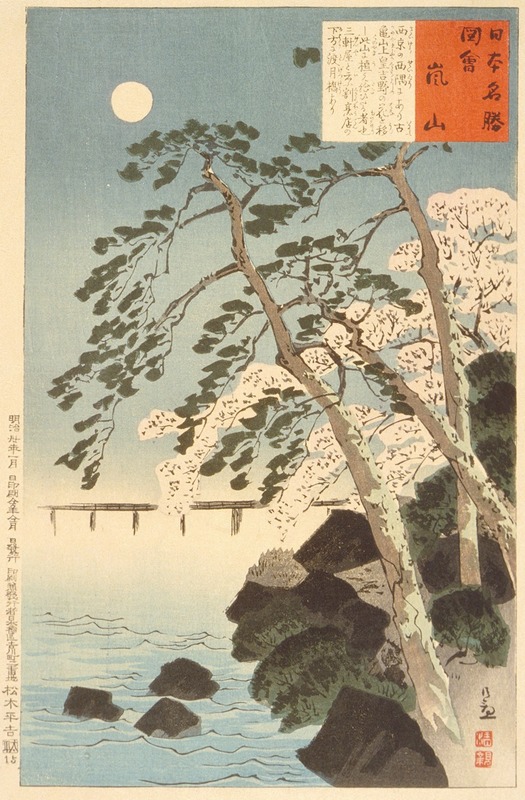
Arashiyama, Kyoto
A hand-painted replica of Kobayashi Kiyochika’s masterpiece Arashiyama, Kyoto, meticulously crafted by professional artists to capture the true essence of the original. Each piece is created with museum-quality canvas and rare mineral pigments, carefully painted by experienced artists with delicate brushstrokes and rich, layered colors to perfectly recreate the texture of the original artwork. Unlike machine-printed reproductions, this hand-painted version brings the painting to life, infused with the artist’s emotions and skill in every stroke. Whether for personal collection or home decoration, it instantly elevates the artistic atmosphere of any space.
"Arashiyama, Kyoto" is a woodblock print created by Kobayashi Kiyochika, a renowned Japanese artist of the Meiji period. Kiyochika, born in 1847 and passing away in 1915, is celebrated for his innovative approach to ukiyo-e, a genre of Japanese art that flourished from the 17th through 19th centuries. His works often reflect the rapid modernization of Japan during the Meiji era, blending traditional techniques with Western influences.
Kiyochika's "Arashiyama, Kyoto" captures the scenic beauty of the Arashiyama district, a popular tourist destination in Kyoto known for its picturesque landscapes, including the iconic Togetsukyo Bridge and the lush bamboo groves. Arashiyama has been a favored spot for both locals and visitors for centuries, celebrated for its natural beauty and cultural significance.
The print is part of Kiyochika's broader body of work that documents the changing face of Japan during a period of significant transformation. His art often juxtaposes traditional Japanese elements with the encroaching influence of Western technology and culture. In "Arashiyama, Kyoto," Kiyochika employs his characteristic use of light and shadow to create a sense of depth and atmosphere, a technique that sets his work apart from other ukiyo-e artists of his time.
Kiyochika's prints are known for their dramatic use of chiaroscuro, a technique that involves the strong contrast between light and dark. This method is evident in "Arashiyama, Kyoto," where the interplay of light and shadow enhances the serene and tranquil ambiance of the scene. The detailed depiction of natural elements, such as the flowing river and the surrounding foliage, showcases Kiyochika's keen observation skills and his ability to convey the essence of a place.
The Meiji period, during which Kiyochika created this print, was a time of great change in Japan. The country was opening up to the world after centuries of isolation, and this shift is reflected in the art of the time. Kiyochika's work, including "Arashiyama, Kyoto," serves as a visual record of this transitional era, capturing both the enduring beauty of traditional Japan and the new influences that were beginning to shape its future.
Kiyochika's contribution to Japanese art extends beyond his technical prowess; his prints offer a window into the cultural and social changes of his time. "Arashiyama, Kyoto" is a testament to his ability to blend the old with the new, creating works that are both historically significant and artistically innovative.
Today, Kobayashi Kiyochika's works, including "Arashiyama, Kyoto," are highly regarded by collectors and art historians alike. They are appreciated not only for their aesthetic qualities but also for their historical value, providing insight into a pivotal period in Japanese history. His prints are held in various museums and private collections around the world, continuing to inspire and captivate audiences with their unique blend of tradition and modernity.





